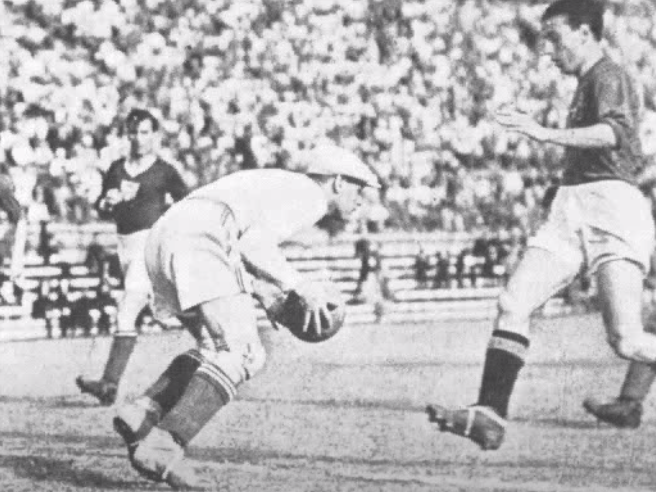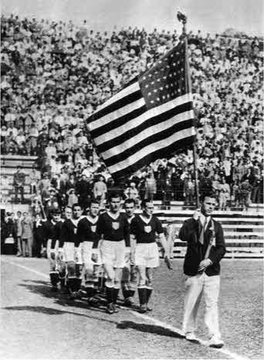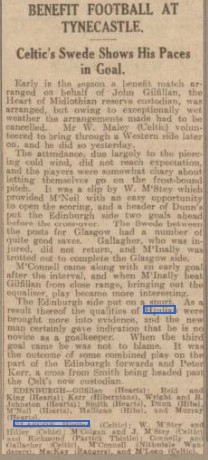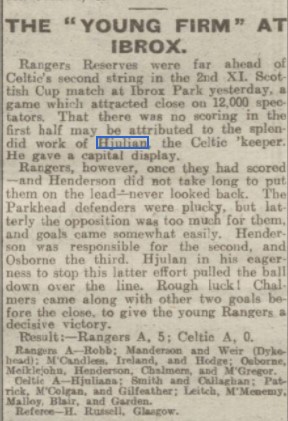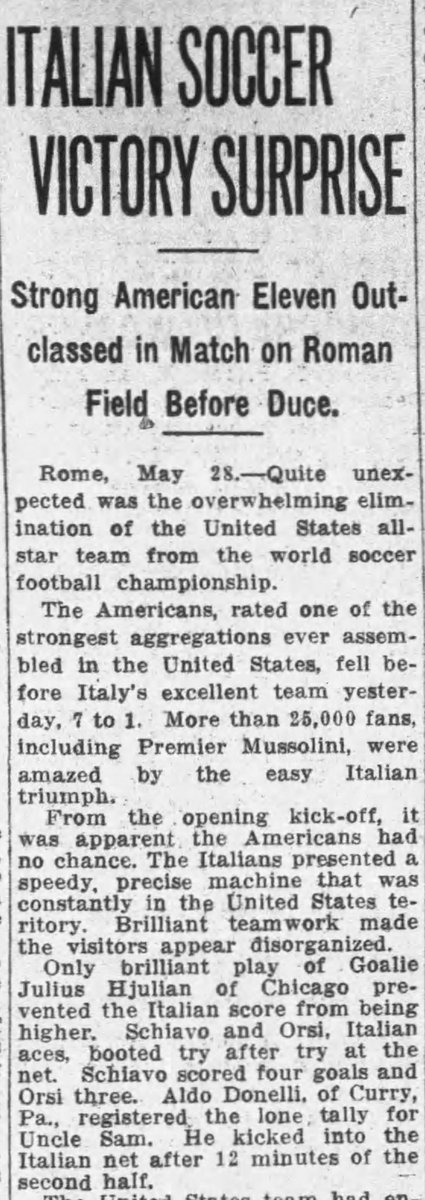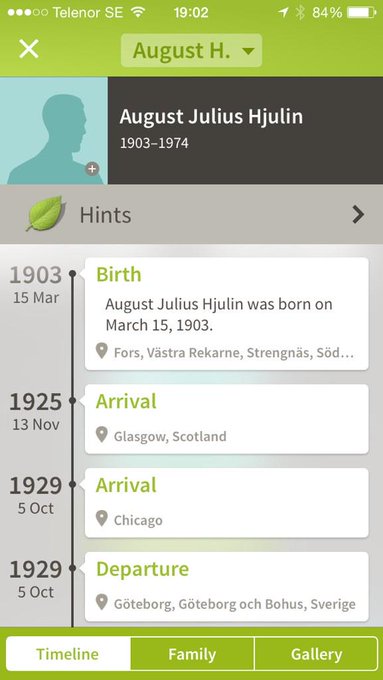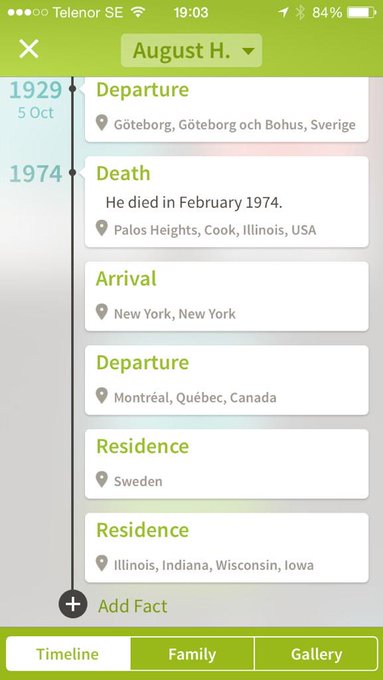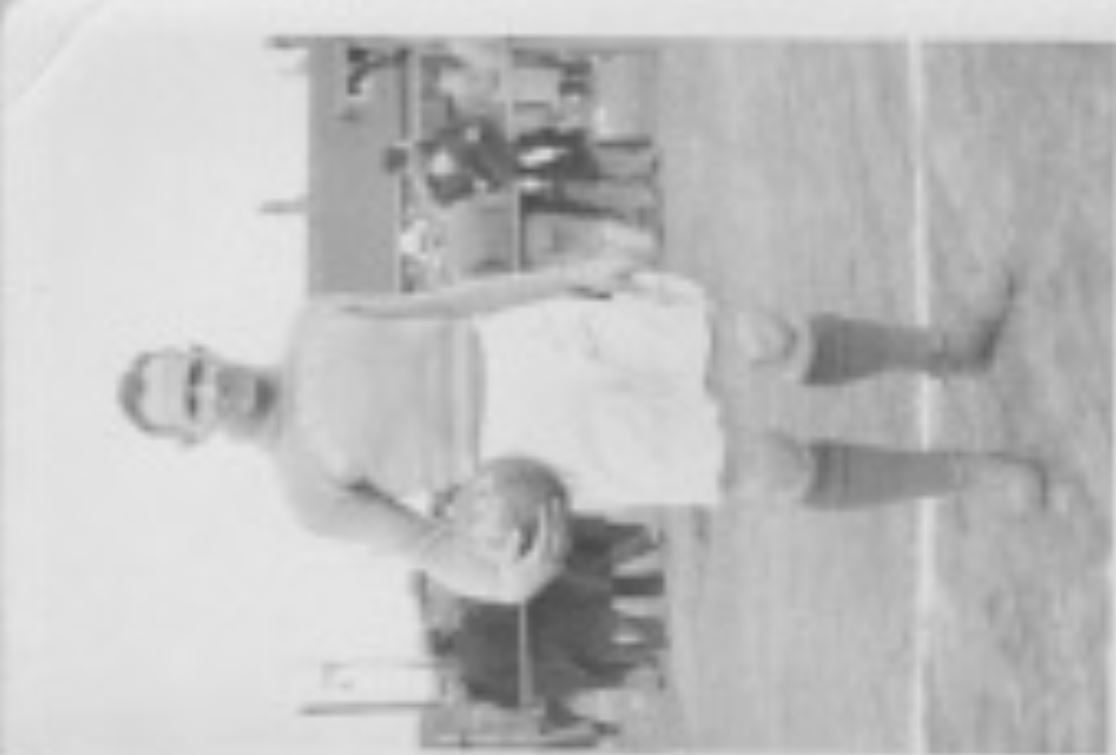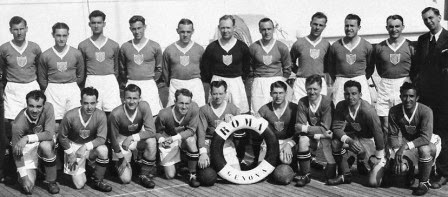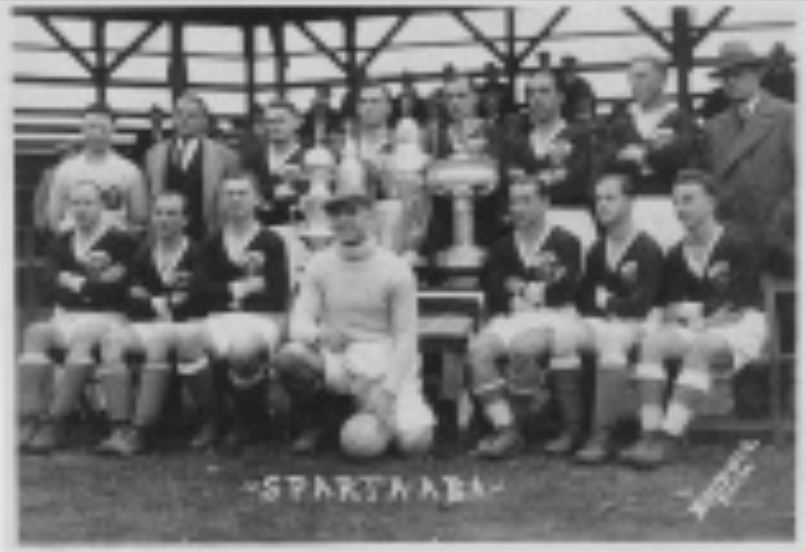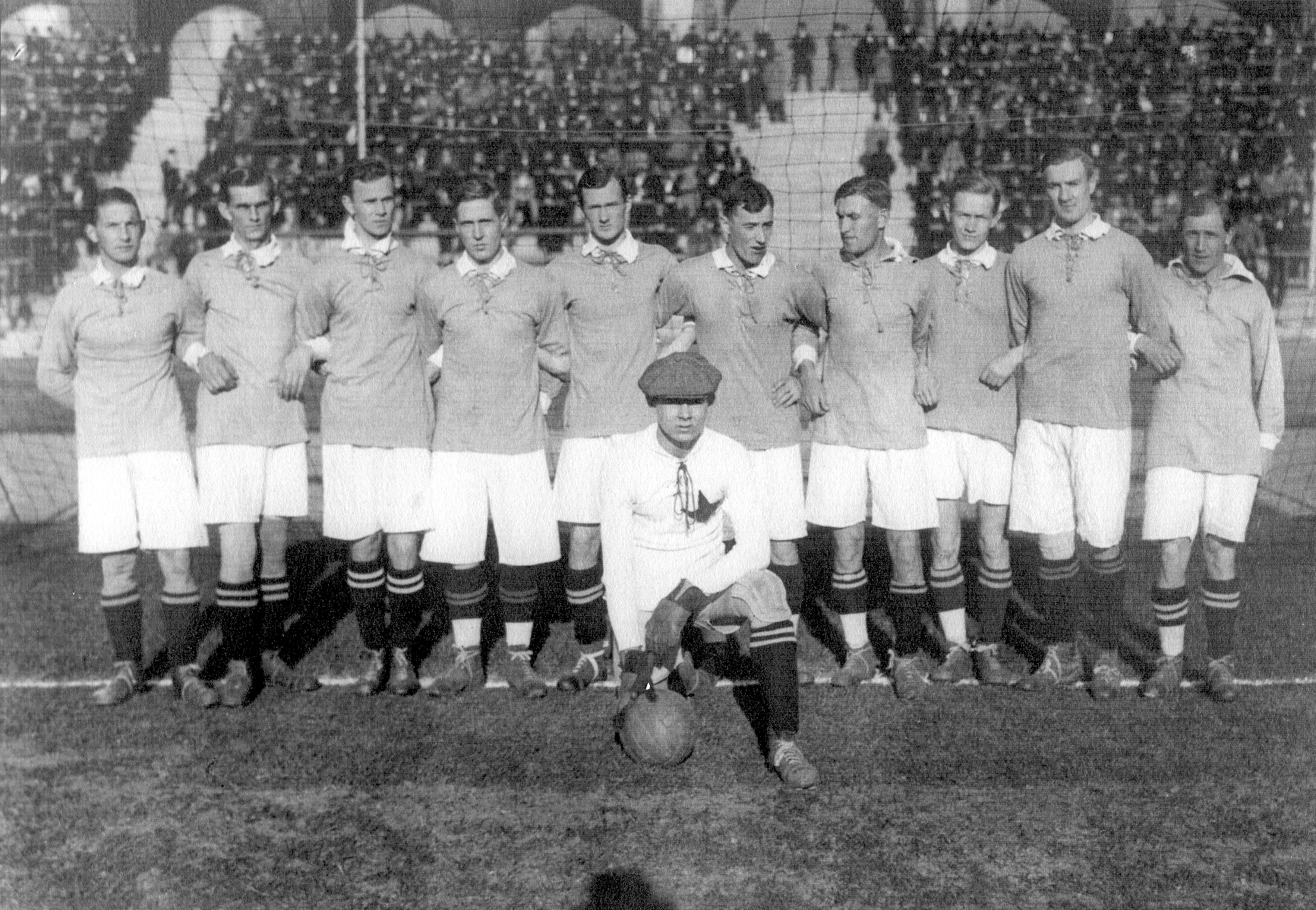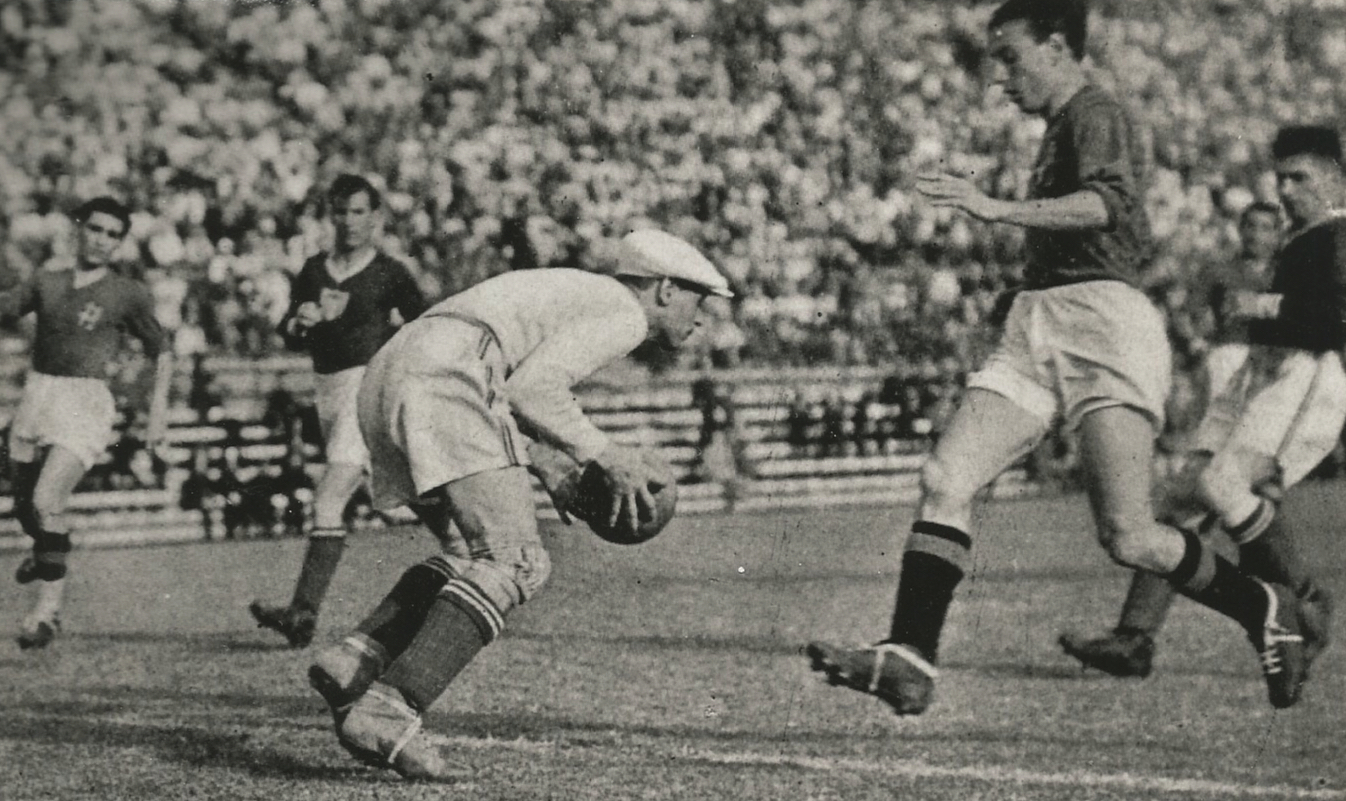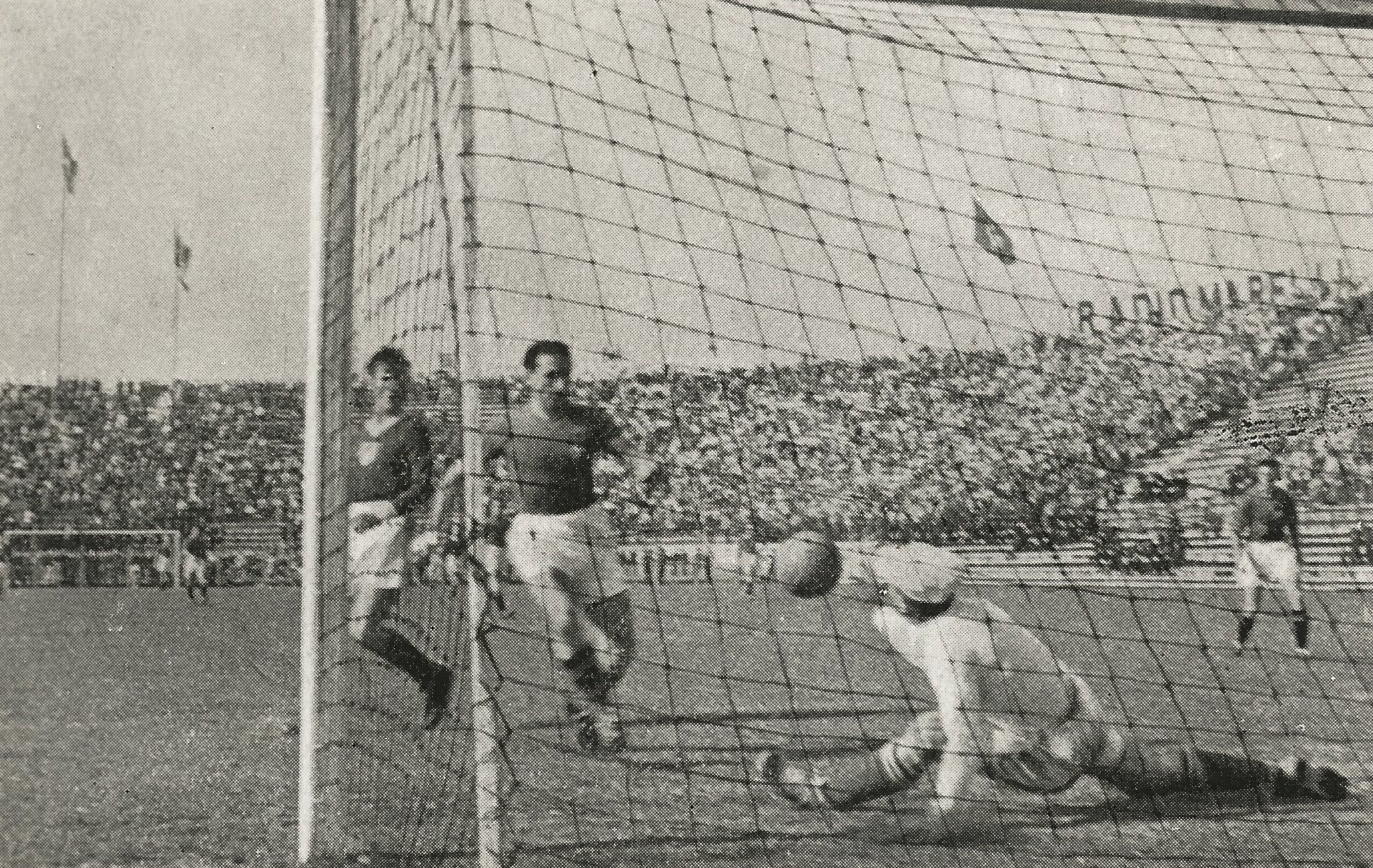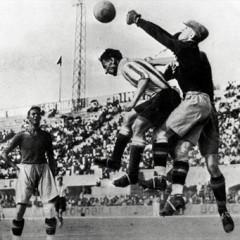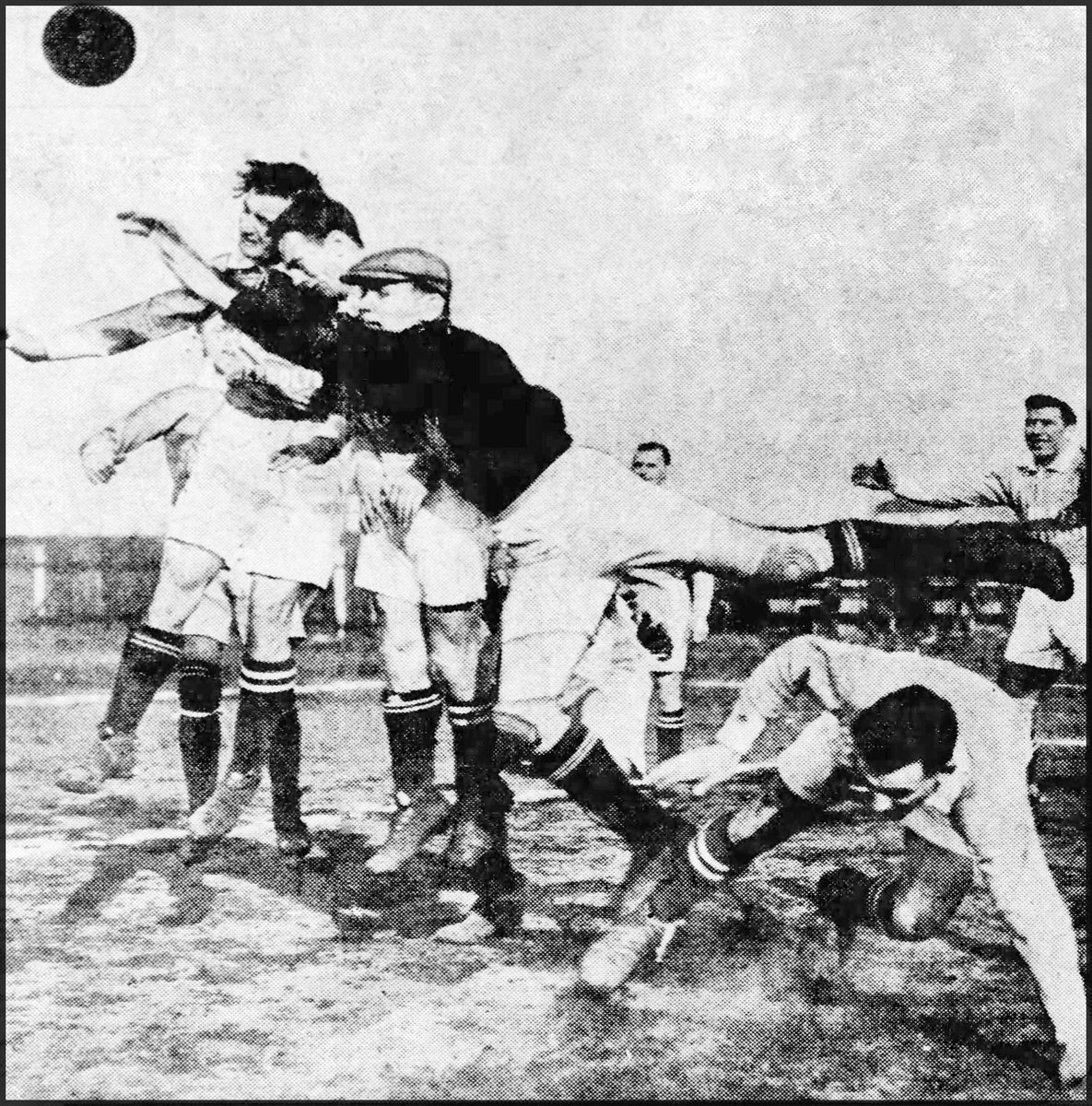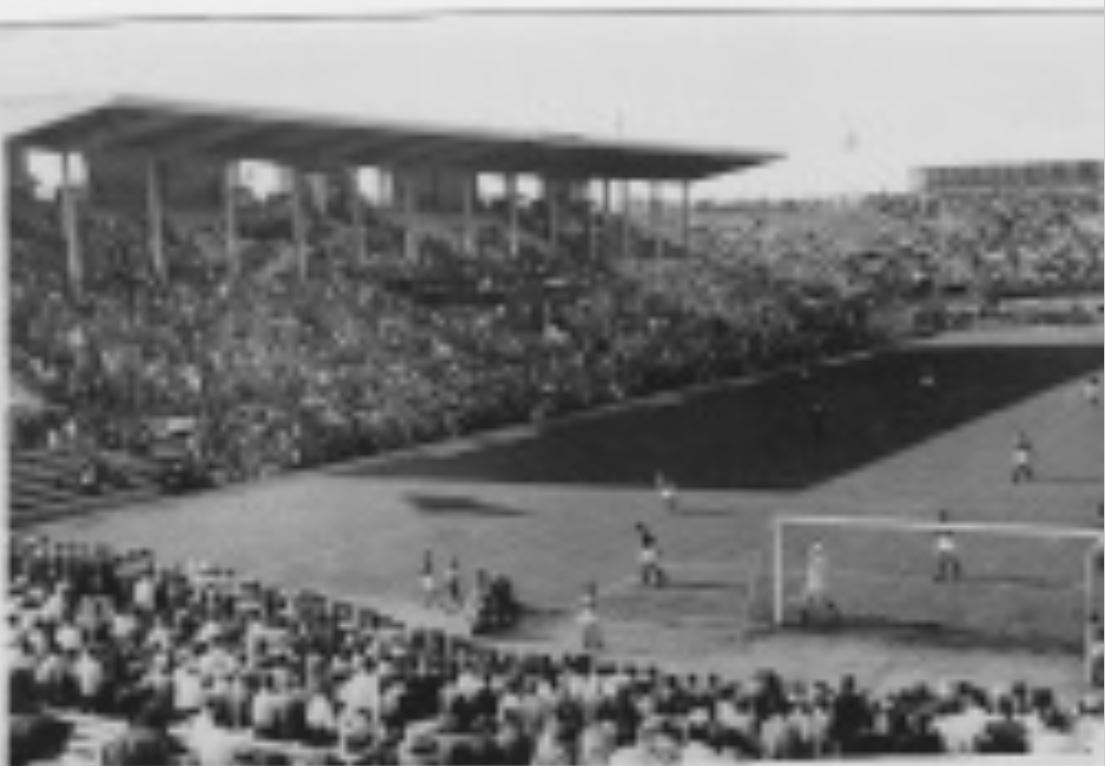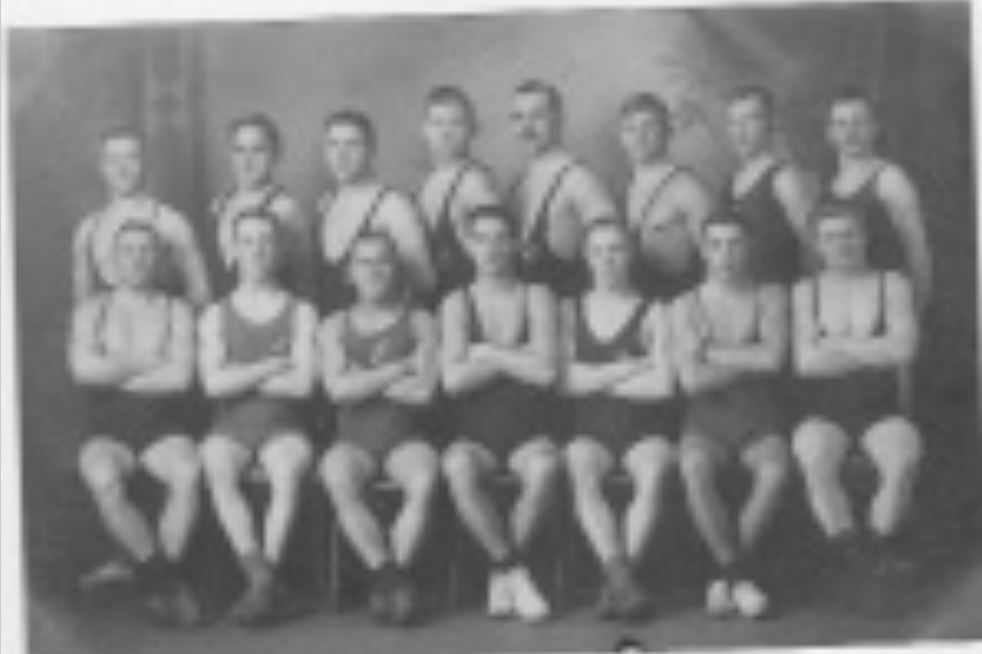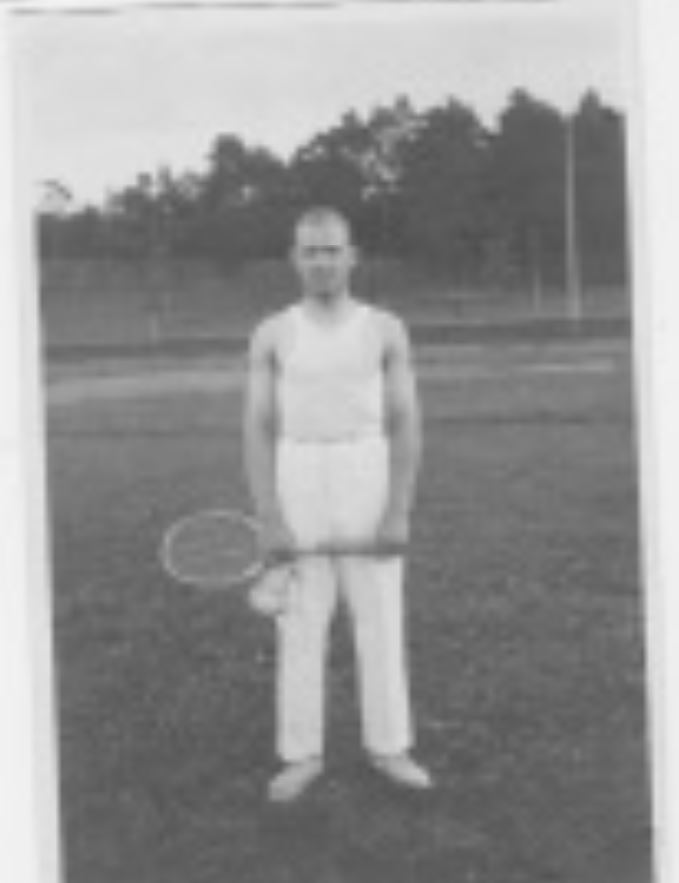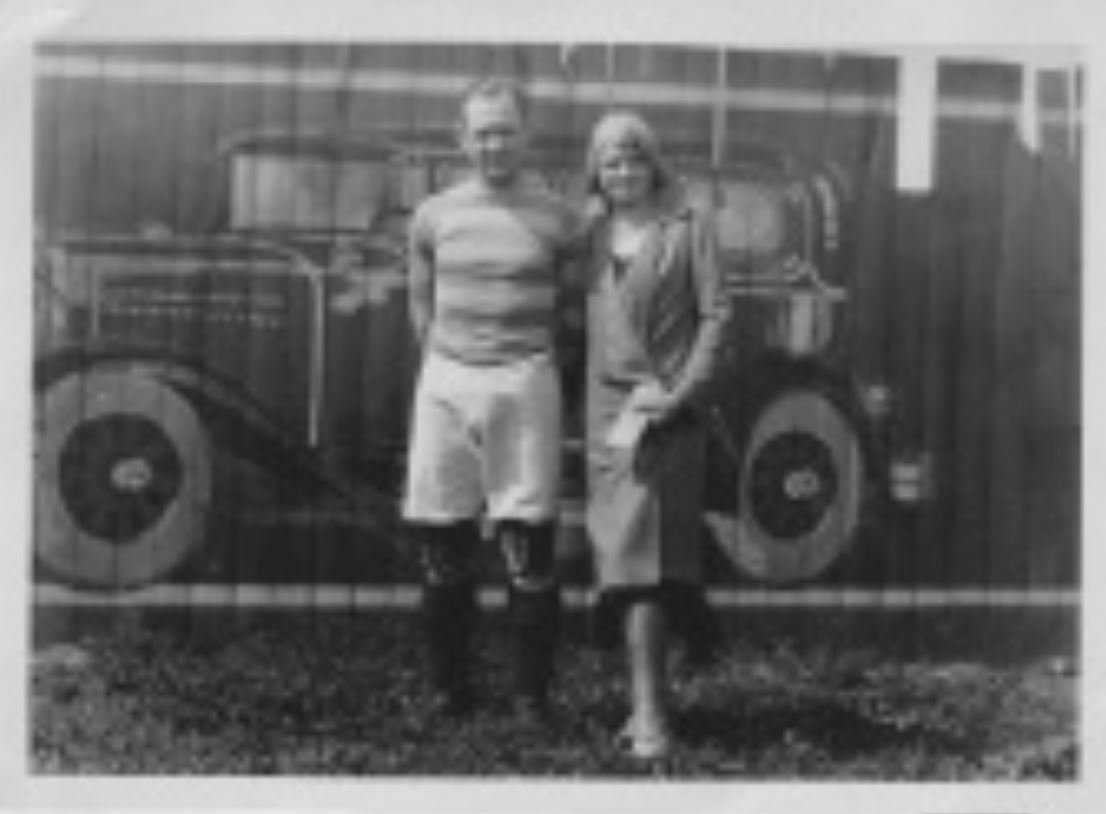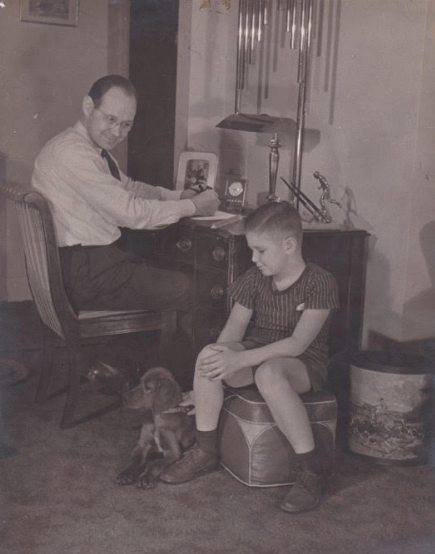A-Z of Players | Players who never played a game A – L
Personal
Fullname: August Julius Hjulin
aka: Julius Hjulian, Julius Hjulin, August Julius Hjulian
Born: 15 March 1903
Died: 1 February 1974
Birthplace: Fors Församling (Församling means Parish) which belongs to Eskilstuna, Sweden
Signed: November 1925
Left: May 1926
Position: Goalkeeper
Internationals: USA
International Caps: 2
Trivia
- Never played a competitive match with the Celtic first team.
- Hjulian the first “European” player (from outwith the British & Irish Isles) to play for Celtic, albeit with the reserves.
- First person ever from Celtic’s books to have played in the World Cup (1934 with the USA). We believe there were two Scots before him, but neither were ex-Celts, both playing with the US team in the inaugural World Cup in 1930: Jim Brown and Andrew Auld.
- Hjulian featured in a few reserve games, and in one game Celtic ‘A’ side/reserves lost 5-0 to Rangers ‘A’ side/reserves.
- Hjulian also played in a Benefit Match (Peter Kerr) v Hibs on 21st April 1926. Another match he featured in was Edinburgh v Glasgow on 2nd December 1925
- Hjulian had already emigrated to the US on 4th November 1922, where over time he was to settle down to make it his home for the rest of his life.
Biog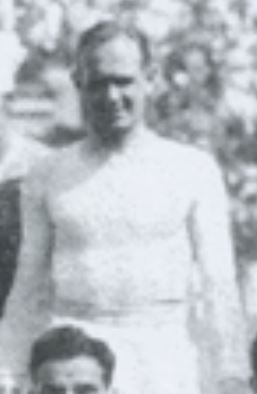
“We have always been a cosmopolitan club since our second year, and we have included in our list of players a Swede, a Jew and a Mohammedan.”
Celtic managerial legend Willie Maley
The Swede in this famous oft-quoted reference is Julius Hjulian
In recent decades few nations have produced Celtic heroes quite like Sweden.
The Scandinavian country is of course home to Henrik Larsson – one of the greatest ever Celts. Henrik’s incredible goalscoring exploits tell only part of his remarkable contribution to the Celtic cause. But the legendary Henrik Larsson isn’t the only Swede adored in Paradise.
As a team mate of Henrik, and later as an assistant coach to Neil Lennon, the formidable Johan Mjallby gave years of great service to the Hoops and remains a hugely popular figure at Celtic Park.
A stalwart of Brendan Rodgers’ invincible treble-winning side Mikael Lustig’s huge popularity with the Celtic support was only partly due to his a qualities as a full back. With eight league titles to his name and a treble treble winner the effervescent Lustig – much to the delight of fans – rarely missed an opportunity to revel in Celtic’s successes against the new Rangers.
But one Swede who remains largely unknown to most Celtic fans was another history maker – Julius Hjulian. The first European player (exc UK & Ireland) to sign for Celtic.
Background & move to the US
Born in 1903 in a working class district of the industrial city of Eskilstuna;the young Hjulian was a keen sportsman who as a teenager became first choice goalkeeper for local club IFK.
Although not the tallest Hjulian proved to be an athletic and courageous stopper. His heroics in goal helped unfashionable IFK Eskilstuna to a shock Swedish championship triumph in 1921. But his career with his home town club would be short lived. Football in Sweden was a strictly amateur game and with a recession hitting Eskilstuna’s traditional steel and iron industries unemployment was high. Just a year after winning the championship Julius would leave Sweden to join his brother for what he hoped would be a more prosperous life in the United States.
Having settled in Chicago he returned to the football field playing for a team sponsored by his employers Pullman who he helped win the Illinois state championship in 1923.
Recruited to Harvey FC, a team based in a southern suburb of Chicago, he was advised to try his luck as a professional in Britain by a group of English referees who had been visiting Illinois and were impressed by his performance.
Time in Scotland
He travelled across the Atlantic in 1925 and was able to arrange accommodation with friends in Glasgow. He secured a trial with Clyde FC and produced an impressive performance.
The Scottish Football League had recently expanded to three divisions and after relegation from the top flight in 1923-24 Clyde found themselves in Division 2 where they were joined by the likes of Armadale, Broxburn, King’s Park and Nithsdale. At a time of falling attendances and financial hardship these were opponents unlikely to bring in the crowds and the cash.
In contrast Celtic – despite a disappointing league campaign – were Scottish Cup holders and when word got around about the impressive keeper on trial at Clyde Willie Maley made a move to tempt Hjulian to Parkhead.
At the time Peter Shevlin had succeeded the great Charlie Shaw as the Celtic custodian. Like Hjulian former St Roch’s man Shevlin was not tall for a keeper but after a shaky start to his Celtic career he had played his part in the cup win.
Hjulian would later recall his Celtic trial where he had to endure a barrage of shots from his prospective teammates while having no boots to wear – the club providing him with no equipment. Struggling to find firm footing on the turf he believed he performed badly. But Maley had seen enough to offer him a contract worth £200 plus match bonuses.
With Shevlin in goals Celtic would lift the 1925-26 league title but the keeper would face criticism when they lost the Scottish Cup final 2-0 to St Mirren.
However Julius would not play a competitive match for Celtic and his Parkhead career would consist of just 3 appearances for the second string. These included a 5-0 defeat to Rangers ‘A’ where despite one error his performance was praised.
Peter Shevlin would eventually lose his place to the prodigious talent of Johnny Thomson. But there would be no Celtic breakthrough for Hjulian. He would briefly return to his native Sweden before returning to Chicago. As he made his new home in the United States he continued to impress on the football fields of Illinois and it would be as an American that he performed on football’s biggest stage.
World Cup 1934
Called up by the USA national team in 1934 he travelled to Italy where after a play-off victory over Mexico the Americans would face off against the hosts in first round tie in Rome on May 27th. A 7-1 loss to the eventual winners was harsh on Julius who had put in another competent performance. From Eskilstuna to the World Cup via Chicago and Glasgow. He was notably the ONLY goalkeeper in the US squad! So quite a risk.
It had been quite the journey for Julius Hjulian. One of football’s forgotten history makers.
He passed away in his adopted home of the USA in 1974.
Quotes
“We have always been a cosmopolitan club since our second year, and we have included in our list of players a Swede, a Jew and a Mohammedan. Much has been made in certain quarters about our religion, but for forty-eight years we have played a mixed team, and some of the greatest Celts we have had did not agree with us in our religious beliefs, although we have never at any time hidden what these are. Men of the type of McNair, Hay, Lyon, Buchan, Cringan, the Thomsons, or Paterson soon found out that broadmindedness which is the real stamp of the good Christian existed to its fullest at Celtic Park, where a man was judged by his football alone.”
Willie Maley
The Swede in the famous oft-referenced quote is Julius Hjulian
Playing Career
No competitive first team games with Celtic
Forums
Links
- http://nguyenjohansson.com/en/julius-journey/
- Youtube: http://www.youtube.com/watch?v=Ku9f5HXxEs4
Notes
- Information gathered from across sources:
- https://twitter.com/nguyenjohansson/status/1514160241646178304?s=20&t=iEUimI5M01qr1QvVe6mvTQ
- https://twitter.com/Jimmy_McColl/status/1364594696975228933?s=20&t=iEUimI5M01qr1QvVe6mvTQ
- He was thought at one point potentially to be the first Jewish player to have played with Celtic, but from searches to date it appears that he was NOT Jewish.
Articles
Timeline:
15 March 1903 – Born in Eskilstuna Fors, Södermanland, Sweden. August Julius Hjulian – http://tinyurl.com/9fmqmwj
Nov 1925 – Montreal to Glasgow
Nov 1926 – Gothenburg to New York – http://tinyurl.com/8uvzxrv
May 1929 – New York to Gothenburg –
Oct 1929 – Gothenburg to Chicago
Summer 1934 – USA goalkeeper at World Cup (P1 W0 L1 F1 A7 )- http://en.wikipedia.org/wiki/Julius_Hjulian
Oct 1934 – Naturalized US citizen
Aug 1939 – Gothenburg to New York
Jul 1946 – New York to Gothenburg
Oct 1946 – Gothenburg to New York –http://tinyurl.com/8t5qyft
Mar 1948 – Gothenburg to New York –http://tinyurl.com/8prnbvk
Feb 1974 – Died in Illinois (last address 60463 Palos Heights, Cook, Illinois, United States of America)
Emigranten Populär, 1783-1951 Swedish Emigration Records, 1783-1951 about Julius Hjulian
Name: Julius Hjulian
Birth Year: abt 1903
Gender: Man (Male)
Place of Origin: Amerika
Destination: New York New York
Record Date: 15 aug 1939
Port of Departure: Göteborg
Database Name: EmiHamn
Archive Call Number: 138:693:100273B
Traveling Companion: M
Principal Person: Hjulian Julius
Sverige, namnindexerade födelseuppgifter, 1870-1941 Sweden, Indexed Birth Records, 1870-1941 about August Julius
Child’s Given Name: August Julius
Birth Date: 15 mar 1903
Birth Place: Eskilstuna Fors, Södermanland, Sweden
Father: Carl August Hjulin
Father Birth Date: 12 apr 1872
Mother: Emma Caroline Eriksson
Mother Birth Date: 28 apr 1875
Mother Age: 28
GID Number: 2499.27.18400
Roll/Fiche Number: CK2853
Volume: SCB
Julius’ journey
Source: http://nguyenjohansson.com/en/julius-journey/
He was the goalkeeper who never stopped moving. As a teenager, he won a historic Swedish title. Later he became a pioneer in Scotland. With the United States, he lost to Mussolini but helped defeat Hitler.
Meet Julius Hjulian – a forgotten footballer of firsts.
Beginnings
Legend has it that the English monk Eskil was sent to Sweden in the middle of the 11th century. His mission: to convert the stubborn heathens west of current-day Stockholm. The result: after interrupting a traditional sacrifice to the gods, Eskil was predictably stoned to death. His few brave supporters carried away the corpse, but after 30 kilometres it became unbearably heavy. Once the body was laid down, a spring of water shot up from the ground. Of course, a church had to be built at that very site. Around it, Eskilstuna evolved.
By the early 20th century, Eskilstuna had grown into an important industrial city, dubbed “The Sheffield of Sweden” by Anglophile journalists, due to its steel and iron production.
Population increased rapidly. Carl August Hjulin was one of those who had come in search of work – and found it, shuffling coal onto locomotives. With time, he advanced to actually driving the trains. In 1909, he was also elected to city council, representing the burgeoning Social Democratic Party.
Carl August and Emma Hjulin’s youngest son was born in 1903. After eight years of schooling, Julius crossed the rails – the family quite literally lived on the wrong side of the tracks, in the overcrowded working-class neighbourhood of Nyfors – to find work in one of Eskilstuna’s many small factories or workshops. The 17-year old is listed as a turner in the 1920 church records.
However, he was most likely unemployed (Sweden had managed to avoid World War I, but not the post-war recession). In the meantime, young Julius turned to sports. He tried his hand at both boxing and wrestling, but was drawn between the goalposts.
As with Christianity, the Brits had brought the football gospel to Sweden. Örgryte of Gothenburg had won the first national title in 1896. A quarter of a century later, teams from the two major cities continued to dominate – no club from outside of Stockholm/Gothenburg had ever won the knockout championship tournament. Certainly not IFK Eskilstuna. “The Blue Tops”, formed in 1897, led the way locally thanks to strong support from the upper echelons of the city. But nationally, IFK had failed to make an impression. In the spring of 1921, IFK finished ninth out of ten teams in an early version of the national league.
Fortunes soon started to change, though. When the championship tournament started in the fall, IFK first received a bye. Then two Stockholm teams were defeated. 1–0, 1–0.
Suddenly, IFK were to play a semi-final at the Olympic Stadium in Stockholm. It was all supposed to end there – Helsingborg were clear favourites. Especially with their goal being tended by the new star of the national team: Sigge Lindberg, who would soon turn down an offer from Arsenal.
IFK relied on 18-year old Julius. After two clean sheets in the early rounds, he now came up with the big save in the dying minutes. Eskilstuna’s one-goal lead survived. From Norrköping, more sensational news came in: the home team Sleipner had defeated Örgryte in the second semi-final. For the first time ever, two “countryside” teams would meet in the showpiece game.
The Final
October 16, 1921. A Sunday, but the Central Station platform was still crowded at 6 a.m. An extra train had been arranged to carry IFK Eskilstuna’s supporters on the four hour journey to Stockholm. Who knows – maybe Carl August Hjulin was the driver?
Three weeks earlier, his Social Democrats had won a historic election. For the first time, (almost) all Swedish men and women had been allowed to vote. Perhaps the Sleipner camp saw it as a lucky omen. They were the blue-collar club in Norrköping. Now, the fancy IFK Eskilstuna were to be defeated, too. Fans poured into the capital. Stockholmers also took an interest in the unusual final. 11,075 spectators – plus 620 non-paying conscriptees – set a new record for the title decider.
They were treated to a stale first half. For the second, Sleipner (named after the Norse god Odin’s eight-legged horse) came out kicking. Julius Hjulin was caught napping. When the clouds above the stadium brick walls suddenly cleared, he was blinded by the bright low October sun. A Sleipner shot, a futile late attempt to save. 0–1.
He had to brush it off, as IFK worked their way back into the game. When Gösta Pettersson finally equalised, Julius rushed upfield to hug the teammate who had saved him from eternal ridicule. When Henning Olsson scored the winner, six minutes from time, Julius turned to the stands with his arms raised. Then he pulled his cap as far down as it would go, and spit into the palms of his hands. But no more saves were required. In the stands – and in the main square in Eskilstuna – celebrations broke out.
That Monday, the Von Rosen trophy was displayed in a local shop window. Then reality returned to Eskilstuna. Unemployment continued to rise, no matter who was in charge. By 1922, a quarter of the population would be out of a job. Many grew tired of waiting and emigrated to the United States. Julius’s older brother Paulinus had been one of them. Being a footballer did not help, since the Swedish game was still strictly amateur. In November 1922, Carl August had saved up enough money for another ticket. Julius Hjulin, 19, was lost to Swedish football.
The Pioneer
Over the last 20 years, a string of Swedes have found success at Scottish giants Celtic FC. The full-back Mikael Lustig is the latest, a permanent fixture in last season’s treble-winning side. Magnus Hedman and Johan Mjällby were in the squad that reached the 2003 Uefa Cup final. The greatest is of course Henrik Larsson, who scored 174 goals between 1997 and 2004.
But Julius Hjulian was the first.
Hjulian? Yes, he changed his name upon arrival at Ellis Island in New York. He continued to Chicago, where he found work with the railroad car manufacturer Pullman. Julius was also signed up for the factory-sponsored “soccer” team, on condition that he avoid working night shifts. Pullman FC won the Illinois state championship – the Peel Cup – in 1923, and Julius was recruited to Harvey FC.
He described himself as a brave goalkeeper. Not particularly tall, but powerful and quick off his line. Julius said that while playing for Harvey, a group of travelling English referees spotted his talent. They recommended that he try his luck in Britain. And Julius was never one to hesitate.
In 1925, he travelled back across the Atlantic. He stayed with friends in Glasgow, and earned his first trial with Second Division Clyde FC. After a successful session, word travelled quickly. The 16-time champions also wanted to see Julius in action.
Almost 50 years later, Julius told a Swedish newspaper the story of his first Celtic practice. There were no football boots available for him, so he had to wear his regular shoes while the Celtic stars fired away at him. “My hands were aching, my feet slipped and I thought I performed badly. When I returned to the dressing room, I had given up hope of playing Division One football.” But Willie Maley, the legendary Celtic manager who had been in charge since 1897, wanted him to sign a contract. Julius thereby became the first known Swede to play professionally on the British Isles. He definitely was the first Scandinavian at Celtic.
According to his 1973 interview, Julius received £200, plus match bonuses. Those did not amount to much, as Peter Shevlin remained Celtic’s undisputed number one. Julius is said to have played only three games for the club, since the reserve team had been scrapped for the 1925/26 season. The campaign ended with Celtic winning the league, but losing the Cup final following a Shevlin error. The next winter, after more mistakes, he was replaced by John Thomson.
Not by Julius, who had already left. He returned to Eskilstuna in the summer of 1926, playing one final (exhibition) game for IFK. He also trained the team that autumn. Then he was lost again.
The American
May 27, 1934. Twelve Swedes took the field on that historic afternoon. Eleven in Bologna, where Sweden made their World Cup debut against Argentina. One in Rome. Representing the United States.
Julius hopped on another America-bound ship in 1926, heading back to Chicago. Now he found a job with the steam-pipe-producing Crane Company. It was discovered that he could interpret the most complicated blueprints, something he had picked up during his youth in Eskilstuna. When the Great Depression struck, Julius was safe at Crane, working in the engineering department. He continued his goalkeeping career as well, representing Sparta ABA FC and then Chicago Bricklayers (later renamed the Wieboldt Wonderbolts). Both won the Peel Cup. And then there was another Cup.
The American national soccer team had played its very first game in 1916, coincidentally in Stockholm’s Olympic Stadium. After defeating the Swedes, the US fitness coach Davenport was hired for a few weeks by the impressed hosts. And standards continued to improve. At the inaugural World Cup in 1930, the US finished joint third. Then financial hardship hit. The professional American Soccer League – based entirely on the East Coast – collapsed. The Federation waited until the very last minute to even sign up for the 1934 World Cup. Once they did, a series of try-out games were hastily arranged to pick a squad. Just four players were to survive from the bronze-winning side. Only one goalkeeper was deemed good enough to make the trip to Italy: Julius Hjulian, by now 31 years old.
The team travelled by steamship to Naples. Curiously, they had not yet secured a place at the World Cup. Because of the late entry, a qualifying game – against Mexico, for the North American spot – was arranged. In Rome, three days before the tournament proper was to start. Julius conceded two goals, but the striker Aldo Donelli scored four. The American reward? A first-round game against the feared Italian hosts.
For that game, Benito Mussolini took his seat in the Stadio del Partito Nazionale Fascista. The dictator’s PR people let it be known that “Il Duce” had paid for his own ticket. He sported a white sailor’s cap. Julius Hjulian wore his usual grey one.
All eight games of the opening round started simultaneously. Sweden advanced in Bologna. In Rome, Italy’s Serie A pros ran rings around the American amateurs. 3–0 at halftime, 6–1 after 70 minutes. The New York Times would report that “only the fine goal-tending of Julius Hjulian of Chicago kept the score as low as it was.” In one surviving photo, Julius has rushed out to intercept the ball. He has grabbed it, just in front of Giuseppe Meazza. But the Inter legend was to have the last laugh, scoring Italy’s seventh goal in the closing minutes.
Two weeks later, Italy won the title in controversial fashion (the Swedish referee Ivan Eklind had a long chat with Mussolini before the final). The eliminated Americans had already moved on, to a tour of Germany. After that, Julius was done with football. But not with Germany…
And back to the beginning…
These days, the Stockholm–Eskilstuna train takes just over an hour. As we pull into the station, I spot the Nyfors neighbourhood where Julius Hjulian grew up. The whole block was torn down after World War II, and replaced. But problems remain the same: unemployment is unusually high in Nyfors.
All of Eskilstuna fell on hard times in the 1970s, when industrial demands changed. IFK would also run into problems. They played 14 seasons in the top-flight Allsvenskan, most recently in 1964. 28 straight years in the second division followed, until the real downward spiral started. In 2014, after years of mismanagement, the one-time champions were relegated to Sweden’s sixth level.
But I come here looking for remains from the golden age. For a few months earlier, I received an email. From Julius Hjulian.
Not from the goalkeeper, but from his only child, bearing the same name. 80-year-old Julius R Hjulian resides in Rockport, Texas, and is happy to share memories, photos and newspaper clippings of his famous father.
For example, it turns out Julius Hjulian Sr was recruited by the American military during World War II. The Navy was having trouble with steam pipes coming apart on their ships, after chasing the German submarines. The Crane Company in Chicago was asked to solve the situation.
“Dad sat in on the problem presentation on a Wednesday, and came back with the solution the following Monday,” writes Julius R Hjulian in an email. “But that created a problem for Dad, as the government felt that he was too important to be left out in public life. So he was required to move to Fort Sheridan Army Base for the duration of the war, and Mother and I only saw him on weekends.”
When the war was finally won, a long vacation awaited. The Hjulians relocated to Eskilstuna for a while. In 1946, IFK’s veterans gathered to celebrate the 25th anniversary of their triumph. Julius Sr was there, telling tall tales of his American adventures. He was still considered the club’s finest goalkeeper. The rest of Swedish football had forgotten him long ago.
Eventually, the family returned to the US. But Julius Sr and his wife Agnes continued to visit Sweden in the summers. Back in Illinois, he became known as an inventor (32 patents in total) and a keen collector of clocks. In 1974, his time was up.
Which brings me to Eskilstuna. I walk to the impressive Kloster church, where a statue of Saint Eskil welcomes you. Inside, a baptism is about to start. I ask for directions to the cemetery. Once there, I search it. Then search it again. And finally, I find it. The headstone is hidden behind a sprout of weeds, the writing hard to make out in the bright October sun. But yes, it does read “CA Hjulins familjegrav”. The family tomb of Carl August, Emma and three of their children. Including Julius Sr. The last stop on his long journey.
I continue mine. To a small football field in the south of town, where the last round of the 2016 sixth division is being played. IFK win, and clinch promotion. In Eskilstuna, the age of miracles has not yet passed.
From In Bed with Maradona, July 2017. This article is an adapted excerpt from the book “När bollen rullade vår väg” (Pintxo, 2017) – about 14 Swedish football clubs that once were successful, but now play in the lower divisions.
Celtics first Swedish
http://hem.passagen.se/jsbjsj/shamrock/julius.htm
Henrik “Henke” Larsson is not the first Swedish player in Celtics rolls. As early as the 1920s there was a Swedish football player in Celtics team that however emigreade to the U.S. before he made a few first-team appearances for Celtic. Eskilstuna goalkeeper Julius A. Hjulin (later he took the surname Hjulian) were replacements for those days great goalkeeper at Celtic, Peter Shevlin. Julius was, however, its revansh 10 years later when he played two World Cup matches for his adopted country the United States in Italy World Cup 1934th
How it started
Julius Hjulin one of the largest profile keeper Sormland fostered. But today it is not many who remember the old hero, who was one of the forerunners to the U.S. World Cup goalkeeper Tony Meola – not only in terms of body building. What even fewer know is that he is in search of a professional career playing for Celtic in the 1920s. No notes available for some first-team matches in cup or league, but in “An Alphabet of the Celts” by MacBride, O’Connor and Sheridan (publisher of, among others Ahnorak fanzine “The Celt”) is found in the biography of Celtic goalkeeper Peter Shevlin the following note: “his main under study had been the big American-Swede Julius Hjulian.
How did visiting Julius Hjulian in the U.S. and more interesting in Celtic? In fact, what helped him out was conservative football bosses in Sweden in the early 1920’s. Care was taken to keep amateur rules are very strict, and the squad boycotted thus of the people of Göteborg and some others. But not by IFK Eskilstuna in 1921 held six full national team entries.
SM Gold
Club team became stronger and IFK also took her and Sörmlands first and only SM-character 1921st The goal tending a then eighteen Hjulin, and he had a big part in what was then the grand Sleipner was defeated by 2-1 at Olympic Stadium. Two years later it was time again, the national finals against AIK with “Bill” Cook in the lead. At full time it was a draw, 1-1, but ultimately got Julus Hjulin pick up the ball out of his goal on four occasions and Eskilstuna return home without SM-dent.
In Scotland
When Julius took his belongings together and went to Scotland. One might ask why? Those known eHjulin at that time talking about a burning need for money in the young IFK-son. He also wanted the world and had heard that it was possible to earn a part of football: a tough attitude. Another reason could be that he wanted to avoid being drafted into military service. He had the military authorities after him and when he made his visit to Sweden in the family got to go down to Gothenburg and to board the boat he came. If he had gone ashore had police and militöra miyndigheterna imprisoned him. First 1962 customer Julius return to Sweden without the risk of the limitation period has expired for the ‘crime’.
Celtic first
Anyway, off we went and Julius went to the great Scottish club Celtic from glasgow. This was probably the 1922nd Here he was, however, mostly keep to the B-team, which had Julius – one of the first Swedish professionals – to steer our course across the Atlantic. Celtic spent reservlagsbverksamheten following season 1922-23, so Julius left Celtic also due to this cause, but he persisted in their rolls as a player. Thus ååterkom Julius to Celtic in 1925, after a few years in the U.S. with Pullman Cars FC and FC Harvey, both in Chichago, and it is only then that the Scottish papers note him. Julius played, a number of appearances for Celtic documented.
Known are the following:
February 20, 1926 at Ibrox (12,000 spectators) Rangers against Celtic in 2nd XICup, loss of 5-0, but Julius behaved very well and the load was not for any of the goals. The match was the team’s first this season.
April 21, 1926 at Easter Road (2,000 spectators) Hibernian v Celtic in the Peter Kerr recettmatch. Celtic won 2-0, and Julius was a teapot in siliver as memory.
It seems that Julius Hjulin not played at Celtic Park, or make any more matches with Celtic. That said, however, with some reservations.
Changed name and club
Julius Hjulin Americanized his name to Hjulian (probably already in Scotland). In the U.S., he represented the three major clubs, first Sparta ABA in Chicago. With the team he won the Peel Cup every year between 1928 and 1933. He served with today’s standards, no larger sums, but in Sweden they were amazed when football was considered a game, a pastime. He was such Case for the Spartans in a game meo rangers who were on tour. The highlight of his career, Celtic spite, however, would have been matchern World Cup 1934 for his adopted country the United States, to Mexico and World Champions Italy.
Facts about Julius A. Hjulin (Hjulian)
Goalkeeper
Date of birth: 03/15/1903
Died in Palos Heights, Illinois (USA) in early February 1974
Started in IFK Eskilstuna, where he won the Championship in 1921 and went through Glasgow Celtic’s B team in Sparta ABA, Chicago 1926th The German-Bohemian-American team dominated the Spartans in Chicago and won Peel Cup every year between 1928 and 1933. Became a U.S. citizen and guarded U.S. goal in World Cup 1934th Then he played for Chicago Widerboldt Wondebolts, which that year won the Peel Cup.
Playing Career of Julius A. Hjulin (Hjulian)
IFK Eskilstuna, SM-winners in 1921 (2-1 against the Sleipner), lost the final in 1923 (1-2 ef against AIK)
Emigrated to Scotland and Glasgow Celtic 1922-23
Went to USA Pullman Cars FC, Chicago (USA) 1923-24
Harvey FC, Chicago 1924-25
Returned to Scotland, Celtic Glagow November 1925 to May 1926
Participated in the friendly match IFK Eskilstuna – Djurgården in Stockholm 31 May 1926.
Emigrated October 26, 1926 to U.S. according to Passenger Lists of Emigrant Institute in Växjö.
Sparta ABA, Chicago 1926-33 (Peel won the Cup six years running 1298-33)
1928 was played the final against Swedish American Athletic Association, Chicago at Solidier Field, Chicago (0-0 and 3-2 in the replay)
Chicago Wieboldt Wonderbolts 1934 (won the Peel Cup)
(Bethlehem Steel Company FC 1935?, Not confirmed, however, confirmed by JH’s cousin in Sweden.)
2 A-caps for the USA, May 24 against Mexico 4-3 and May 27, 1934 against Italy in the World Cup 1934
Sources
“My cousin was pro in soccer in the U.S.” Södermanland News June 24, 1984 (in an interview with Hjulins Cousin Emmy Landberg’s son, then 84 years)
“The Swedes in the United States” a comprehensive review of all Americans have played in the U.S. This year’s Football 1994 (Gunnar Persson)
“Julius Hjulian – a Swede at Celtic”, a bibliography of “The Celt” No. 55, May 1997. (Ed. George Sheridan)
Peter Shevlin, a biography in “An alphabet of the Celts” (Eugene MacBride, Martin O’Connor and George Sheridan.
The article published in The urspringligen Shamrock No. 3 (1998)
Below pics provided by: @nguyenjohansson
